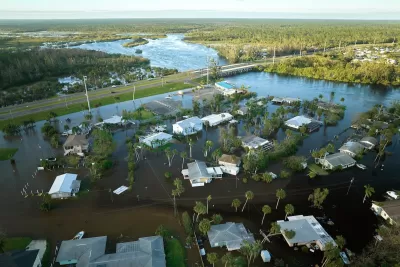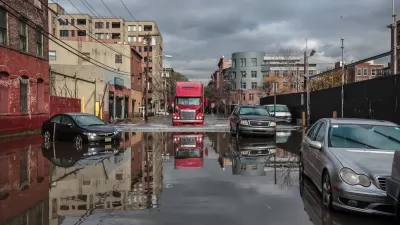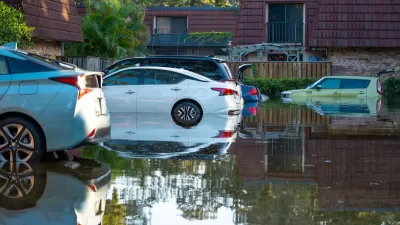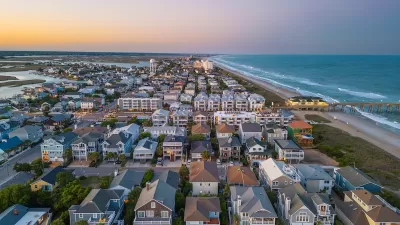People of color and lower-income residents tend to lose wealth despite the stated goals of federal assistance programs to restore communities impacted by disasters.

Research into the distribution of financial aid after climate disasters reveals that some of the nation’s most disadvantaged communities are often overlooked when it comes to disaster assistance resources, reports Amy Green for Inside Climate News.
“One 2018 study found that while white residents tend to gain affluence over time after a catastrophe, Blacks and other residents of color lose wealth. In counties where very little damage occurred between 1999 and 2013, researchers found that white residents gained an average of $26,000 in wealth but reaped nearly five times as much, about $126,000, in counties that suffered $10 billion in damage. By contrast, people of other races, who gained wealth in areas spared from significant damage, lost ground in hard-hit places. Black residents in damaged areas lost $27,000 in wealth, Latinos lost $29,000 and people of other races such as Asians lost $10,000.”
According to the same study, both public (FEMA) and private insurance programs are aimed at “restoring restoring property or wealth, an approach favoring those with more property and the ability to pay for insurance.” Lower-income residents impacted by climate disasters, meanwhile, suffer other related losses such as jobs and increased rents that assistance programs do not cover.
A 2020 report from the National Advisory Council recommended that FEMA create an “equity standard” to ensure its grants reach the communities that need them most. “ The document also suggested incorporating diversity, equity and inclusion into FEMA practices, recruiting an inclusive workforce and providing fair and equitable opportunities for professional advancement within the agency.” The agency is already incorporating some of these changes.
FULL STORY: After Disasters, Whites Gain Wealth, While People of Color Lose, Research Shows

Rethinking Redlining
For decades we have blamed 100-year-old maps for the patterns of spatial racial inequity that persist in American cities today. An esteemed researcher says: we’ve got it all wrong.

Montreal Mall to Become 6,000 Housing Units
Place Versailles will be transformed into a mixed-use complex over the next 25 years.

Planetizen Federal Action Tracker
A weekly monitor of how Trump’s orders and actions are impacting planners and planning in America.

Santa Clara County Dedicates Over $28M to Affordable Housing
The county is funding over 600 new affordable housing units via revenue from a 2016 bond measure.

Why a Failed ‘Smart City’ Is Still Relevant
A Google-backed proposal to turn an underused section of Toronto waterfront into a tech hub holds relevant lessons about privacy and data.

When Sears Pioneered Modular Housing
Kit homes sold in catalogs like Sears and Montgomery Ward made homeownership affordable for midcentury Americans.
Urban Design for Planners 1: Software Tools
This six-course series explores essential urban design concepts using open source software and equips planners with the tools they need to participate fully in the urban design process.
Planning for Universal Design
Learn the tools for implementing Universal Design in planning regulations.
City of Camden Redevelopment Agency
City of Astoria
Transportation Research & Education Center (TREC) at Portland State University
Regional Transportation Commission of Southern Nevada
Toledo-Lucas County Plan Commissions





























